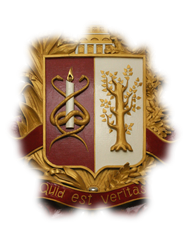Issue: 2024, Vol. 29, No. 4
CONTRACTILE ELEMENTS OF INTESTINAL VILLUS AS THE SMALL INTESTINE LIPID PUMP
- Keywords
- enterocyte, lipid transport, lymphatic capillary
- Abstarct
- Understanding the mechanisms of lipid absorption in the intestinal villus will contribute to the development of methods regulating the absorption of fats and lipophilic drugs. Objective: to search for a morphological substantiation of the contractile function of enterocyte and the dynamic mechanism of lipid adsorption from the intestinal villus into the lymphatic capillary (LC). Material and methods. Mechanisms of lipid absorption were studied on rats of Wistar line. An isolated section of the small intestine was examined by transmission electron microscopy 5, 25 and 45 minutes after intracavitary chymus administration to rats from donor rats. Chyme for administration was prepared by syringe sampling from the initial small intestine of donor rats 60 min after oral administration of 1.5 ml of corn oil. Rats after 24 hours of fasting served as controls. Results and discussion. The contractile function of enterocyte was proved. Bundles of actin filaments within the enterocyte are boound with desmosomes into a single functional complex. The latter limiting complicated finger-like contact ‘squeezes’ chylomicrons from the intercept gap from the lateral to the basal surface of enterocyte. The absorption of lymph from the interstitium of the intestinal villus into the terminal section of the LC occurs under the control of the autonomic nervous system with the participation of bundles of MMC that form spiral bundles around the LC. Thus, contractile elements of the intestinal villi form a unique lipid pump under the control of the autonomic nervous system that may play a crucial role in the depletion or excess absorption of dietary lipids.


 Vestnik4_24-36-40_compressed
Vestnik4_24-36-40_compressed